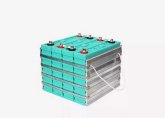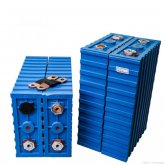I never attended any US university, you must me mistaken me for some one else.
Or any university for that matter.
I have several computer related papers, like MCSE, master CNE, some Cisco related, DBA (SAP, Oracle), list goes on for a while.
Sadly last time I used any of them professionally was 15 years ago, before the problems in the hospital.
Since then I've been on high doses of pain meds, morphine related and grown from not being able to read a page of Donald duck (concentration problems) to where I am now.
Not as sharp as I used to be, flying around Europe, fixing computer related problems at the top 500 companies, but I'll get by. It was a long struggle.
The basics stay the same.
Is slightly bloated lifepo4 safe or unsafe.
That is the question here, and the part where the disagreement is.
I totally agree that slightly bloated lithium polymer is unsafe.
Lifepo4 is one of the (safe) lithium battery.
Yet, some people insists that lifepo4 is as dangerous as lithium polymer once bloated.
Saying it is the same.
I clearly disagree on that point.
Lifepo4 (pear) is the safe type
Lithium polymer (apple) is not.
When a cell gets bloated, looking more round, it suddenly is as dangerous as lithium polymer (apple)
Yes apples are more round then ?, that doesn't make them the same dangerous.
Does it?
Two of the three insist that it is.
Talking about dangerous thermal run away, and electrical fire.
I clearly disagree on that point of few.
Thermal run away that can occur when 2 sheets make contact is problematic for lithium polymer, not for Lifepo4!
You can puncture with an iron pin the whole pack, making connections between many sheets, without any real problems.
I would not advise to keep using a punctured or shot at cell, that is clear also.
The advice to stop using a cell because it's slightly bloated as it "is dangerous" is plain wrong, based of the fear from lithium polymer.
It is fine they like to stay away from the edge of the world, as according to them it's still flat

Sure.
They just should not advise people to stop using slightly bloated cells with the doomsday scenario that it will burn their house down.
With any Powerwall that is a possibility, it won't be the fault of the bloated lifepo4 cell
I know it's hard for them to accept that lifepo4 is not as dangerous as lithium polymer.
Alarm bells going off for lithium polymer are not intended for Lifepo4.
Like it was hard for people to accept that our world isn't flat..
That's is fine for them, don't use slightly bloated lifepo4 cells
Please just don't spread useless fear that will cost other people their money.












